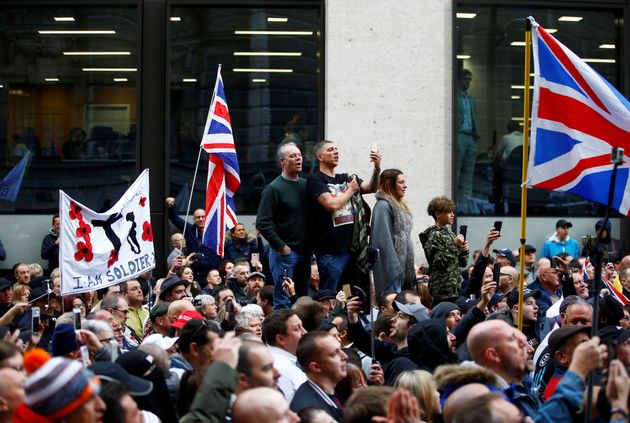
Unlike most historical periods, researchers and historians have an unprecedented number of visual resources showing the inception and rise of the Nazi Party. From their beginnings in Munich in the months after the First World War, through the appearance of the Stormtroopers, to Hitler’s speeches at Nuremberg, we have literally hundreds of thousands of photographs depicting each step.
Look closely at many of these pictures, however, and you’ll notice something interesting. In many of the street scenes, you may notice what appear to be newspapers, stuck on a wall for the public to read – a common practice at the time.
Germany was awash with daily newspapers between the wars – some count 4,000 – and they were the main means of disseminating information. The Nazis knew this, and had a number of newspapers such as the official paper, the ‘Völkischer Beobachter’, and the notorious tabloid, ‘Der Stürmer’ targeted at different segments of society. Indeed, they bought hoardings to display them, and gave out free copies. It was the cheapest means to spread their message.
Right through German people’s seduction by the Nazi Party, prior to their taking power, we have the propaganda tools they used to repeat their message on full display.
Europe and the United Kingdom in 2019 isn’t the Weimar Republic, and the political landscape we wander is, understandably, substantially different. However, one thing remains the same: those on the Far Right still take advantage of our main communication vectors to spread their message and incite hatred.
In 2019, quite simply, our main means of news-gathering is social media.
We see this trend most visibly in the rise of the ‘Gilets Jaunes’ in France. Several right-wing groups, including Generation Identitaire, recently exposed by Al-Jazeera for racist thuggery, have latched on to the protests. They have used their understanding of Facebook to both organise and live-stream their involvement in the protests, blaming migrants and Islam for many of France’s woes. This has not gone unnoticed in the UK, with several right-wing groups calling themselves ‘Yellow Vests’ using the same tactic.
Yet much more radicalisation is not as visible. In December, Prevent reported a 36% rise in referrals regarding the Far Right.
Much of this has been linked to exposure to, and involvement with a number of Facebook pages and groups that bill themselves as reporting on, or highlighting ‘unreported’ stories involving familiar targets – migrants, people of colour, LGBTIQ. A prominent example of these is that of ‘Tommy Robinson’, aka Stephen Yaxley-Lennon, who was memorably jailed for live-streaming outside a grooming trial in 2018.
Outside of Facebook, YouTube is cited by many as another vector for hate. Buoyed by the success of figures such as InfoWars Editor Paul Joseph Watson, who weekly disseminates reactionary, xenophobic rhetoric to a global audience of over a million, others are following his lead here in the UK.
Perhaps the most well known of these is ‘Millennial Woes’, aka thirtysomething Scot Colin Robertson, who despite a number of suspensions, still has over 50,000 subscribers to his channel. He is an avowed white supremacist and is alleged to regularly attend fascist gatherings across Europe and the US. He still appears to have relatively free rein to promote his views, despite previously appearing to call for the murder of migration officials.
In my work in a voluntary capacity with anti-racist organizations, I’ve also noticed a number of smaller channels from UK right-wing figures appearing. These channels produce slick videos, created by savvy twentysomethings and promote an explicitly white supremacist view of race relations and current affairs. The growing viewer numbers of such channels are serious cause for concern.
While I don’t call for the banning of such Facebook pages and YouTube channels – the Far Right has turned being censored into a cash cow – I do suggest that with the spectre of a chaotic Brexit looming, we commit anew to finding ways to counter and disrupt the hateful messages that so many are being exposed to. From government, to social media producers, down to schools, we need to look at ways of tackling this problem whether it be by fact-checking, counter-messaging or attacking their sources of funding.
The Nazis I spoke of at the beginning of this piece were able to win Germans to their cause because they were relentless in exposing them to their messages, with very little to counter them. The Nazis aren’t coming back, but right-wing populist groups, with the same sort of nativist, xenophobic messages are.
If we are serious about halting the rising tide of hate and civil strife, it’s time in 2019 to get serious taking the fight online, coordinated and united. We’ll be paying a very real price if we don’t.


